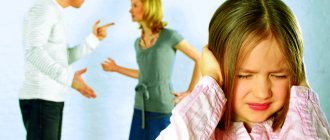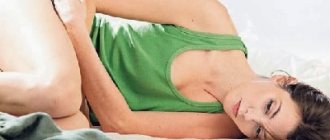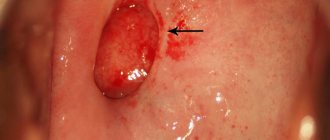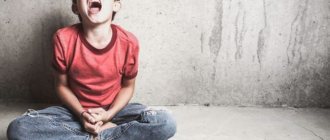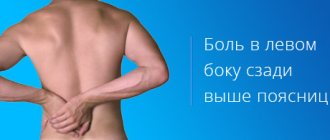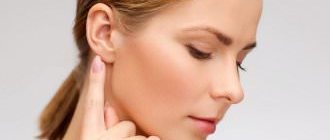What are the symptoms of childhood sleep apnea?
Sleep apnea (snoring at night with pauses in breathing) is the main syndrome and the cause of other malignant processes in the child’s body. Therefore, snoring with pauses in breathing should be considered as a primary sign of pathology in children.
What other symptoms should you look out for, or when does snoring stop being just a loud noise:
- Oral Breathing – Typically, most breathing is done through the nose, both during the day and at night. However, with enlarged tonsils or adenoids, nasal breathing becomes much more difficult.
- Increased night sweats.
- Poor posture during sleep with head tilted back (head thrown back).
- Enuresis - an unclear mechanism of increased tonsil hyperplasia (enlarged tonsils) also suggests an increased risk of bedwetting.
- Restless sleep. Sleep tends to be less restful due to breathing. An increased proportion of carbon dioxide in arterial blood leads to an increase in the respiratory rhythm, which leads to a stress response in the body.
- Cephalgia (headache).
- Daytime sleepiness.
- Pulmonary hypertension – if childhood apnea is not adequately treated over a long period of time, it can lead to increased blood pressure in the pulmonary circulation. And in turn, this can lead to pulmonary hypertension. This functional limitation can be accompanied by failure (massive loss of power) in the heart with all the ensuing consequences.
- Problems with school performance due to lack of sleep.
Types of breath holding in children
There are two types of periodic breathing depending on the symptoms:
- Cyanoid. Symptoms are a sudden stop in breathing, rapid spread of cyanosis to the limbs and face, the color of the skin can be from pale blue to deep purple.
- The second option often goes unnoticed by parents because it causes paleness. There is a sharp outflow of blood from the skin. The child may even lose consciousness in his sleep.
These symptoms may include seizures. Muscle tone also increases. Since periodic breathing occurs during sleep, the child cannot influence the situation.
The main causes of apnea in a child
The most common root cause of snoring in children is, of course, adenoid vegetations or enlarged adenoids . Depending on the degree of their increase, the respiratory lumen of the nasal cavity closes. This not only creates problems with nasal breathing, but also leads to such common diseases as: sinusitis, rhinitis, otitis and, of course, chronic adenoiditis.
The second most common cause of this condition is obesity . Which, due to constitutional features, leads to anatomical compression of the upper respiratory tract in a child. And given the additional presence of adenoid hyperplasia, accordingly, the blockage of nasal breathing becomes even more severe.
Other, less common causes of childhood sleep apnea are:
- Anatomical abnormalities - narrowness of the nasal passages, nasopharyngeal region, etc.
- Chronic diseases - indirectly, but affect tonsillitis, tubo-otitis, allergies, etc.
- Hereditary conditions - for example, polypous rhinosinusitis in cystic fibrosis.
Reasons for holding your breath
Periodic breathing most often occurs in children under 6 months of age. For them, this is considered normal and does not require medical intervention. As much as 5–10% of the time a child spends sleeping may occur during such pauses.
Uneven breathing during sleep may have objective reasons:
- Oxygen deficiency. Blueness of the limbs, skin around the mouth or on the body appears. Most often it occurs in children under 1 year of age. Symptoms: the child gasps for air and cannot take a deep breath.
- Infectious diseases. Whistling, loud snoring, gurgling are added. Inflammation of the lungs is often accompanied by an increase in the rhythm, its acceleration.
- An erratic rhythm combined with shortness of breath indicates that the child has an elevated body temperature. Shortness of breath can also occur with heart problems.
- False croup and bronchitis with obstruction. Symptoms: lost rhythm, noisy exhalation, cough.
How to treat sleep apnea in a child?
As is clear from the previous section, treatment of sleep apnea in a child is aimed at eliminating the cause of this condition.
You should know that, unlike adults, specially targeted surgical interventions for snoring are not performed in children (uvulopalatopharyngoplasty, uvuloplasty, etc.) - due to underdevelopment of the nasopharyngeal apparatus. Begin treatment with an initial examination of the child by an otolaryngologist. It may include not only an examination, but also more in-depth diagnostics, for example, endoscopy of the ENT organs, which is a fairly gentle and effective method.
Next, after identifying the cause, a treatment regimen for this condition will be proposed. Which may also be conservative, for example in the case of grade 1-2 adenoids, or obesity.
The course of therapeutic treatment may include:
- Antibacterial therapy - for example, in the case of adenoiditis.
- The use of hormonal drugs - mostly in the form of nasal drops.
- Antiseptic and anti-inflammatory nasal irrigation or rinsing of the nasal cavity.
- Physiotherapeutic treatment – there are quite a lot of variations, especially with enlarged adenoids.
- Changing diet and exercise therapy for obesity.
In cases where conservative methods are ineffective, or when the cause of apnea cannot be eliminated by these methods, surgical treatment .
To a greater extent, these are adenotomy and tonsillectomy. Septoplasty (for septal deformation) in young children must be approached with caution. And although recent studies prove the absence of contraindications for its implementation in all age groups, due to the immaturity of the facial skeleton in children, this type of operation has limitations.
If we talk about adenoids as a cause of childhood apnea, then the most gentle method of surgical treatment is endoscopic adenotomy. The operation does not take more than 30 minutes, and the period of initial recovery and discharge from the hospital is reduced to 1-2 days.
Treatment of heavy breathing
Treatment of heavy breathing should be aimed exclusively at correcting the condition that caused this symptom: prescribing effective treatment for chronic heart failure. Along with the case, despite effective treatment of the underlying disease such as severe COPD, shortness of breath may persist.
The true relationship between the degree of improvement in pulmonary ventilation parameters and the reduction of heavy breathing is quite difficult to determine. If heavy breathing persists even when using the entire arsenal of modern bronchodilator therapy, additional efforts should be made. For example, adult patients should quit smoking, which in turn will reduce heavy breathing by lowering carboxyhemoglobin levels. Physical rehabilitation will increase resistance to physical activity and will also help reduce heavy breathing.
Ultrasound inhalation sanitation sessions in combination with immunotherapy sessions conducted in our ENT-Asthma clinic are the most effective methods of treating heavy breathing, accompanied by severe hypoxemia at night.
The ENT-Asthma Clinic has extensive experience in treating bronchopulmonary diseases
Heavy breathing can be a symptom and indicate a disease such as bronchial asthma, lung abscess, vegetative-vascular dystonia. Treatment of a single symptom, heavy breathing, without establishing the disease and making a correct diagnosis is most often incorrect and will only harm the patient’s health. In order to determine the correct treatment for heavy breathing, you should consult a specialist doctor who will familiarize you with all the methods of treating the disease, as well as prescribe adequate and effective treatment in the shortest possible time.
Treatment of heavy breathing in our ENT-Asthma clinic involves:
- Fighting infection (sanitation of the bronchi and lesions of the ENT organs);
- Normalization of the gastrointestinal tract and vascular-lymphatic system;
- Increased immunity (immunomodulation);
- Increasing the body's energy to normal.
What conclusions can be drawn about childhood sleep apnea?
Although the main cause of childhood sleep apnea is still enlarged adenoids, we should not forget about other diseases. Quite often, the only primary symptom indicating them is snoring in a child.
There are many indirect signs or symptoms indicating that snoring is a serious problem. Which can lead to more serious problems, including cardiac problems.
A fairly wide range of treatment methods can include both conservative and surgical approaches. In this case, the choice of help for the child depends on the causative disease, which is identified during the necessary diagnosis by an ENT specialist.
Preventive actions
Preventive measures to prevent breath holding in infants mainly come down to the correct arrangement of the child’s sleeping place and position:
- Make sure that your newborn does not lie on his tummy when sleeping. The best position is on the side or back;
- You should approach the choice of mattress responsibly. It must have sufficient rigidity. The use of down feather beds, pillows and blankets is not allowed. The presence of large soft toys in the baby’s bed is also prohibited;
- It is better to use a light blanket as a blanket, without lifting it above the baby’s shoulder line;
- It is necessary to control the air temperature in the room where the child sleeps. Its ideal value is 18-20ºС. Maximum – 24ºС. At higher temperatures, the brain requires more oxygen and becomes more sensitive to hypoxia;
- Smoking is contraindicated in the baby's room;
- It is better to place the crib of babies who are prone to holding their breath in the same room with their parents to make it easier to monitor the child.
Baby sleeping in parents' room
Children who experience sleep apnea at an early age do not require any specialized treatment later on. The risk of complications is also low with careful monitoring of the baby and timely referral to specialists.
Diagnosis and treatment of apnea
If you suspect problems with breathing during sleep, the doctor will definitely perform a diagnosis using various methods to confirm the diagnosis. The first and perhaps the simplest step will be a survey and ordering tests. At this stage, the doctor will be interested in the presence of any symptoms of sleep disorders that were listed earlier in the article. It would be useful to take general blood and urine tests. Additionally, diagnostics of breathing parameters is prescribed. In this case, the lung capacity, blood oxygenation level (oxygen level in the blood) are checked, the presence of upper respiratory tract abnormalities is detected, and blood pressure and temperature are measured.
Then a sleep study called polysomnography is performed. As part of this examination, a number of body indicators are recorded, such as muscle activity (electromyogram), brain activity (electroencephalogram), cardiovascular activity and oxygenation of the blood (electrocardiography and pulse oximetry), movement of the chest during breathing (breathing recursion), and other. Audio and video recording of sleep is possible. This happens in a special room. It is not necessary to wait until nightfall to perform polysomnography. The examination can be carried out in the morning, afternoon or evening. The main thing is to be prepared to spend several hours in the clinic with your child.
If a longer study is required, sleep analysis can be performed at home. The somnograph can operate autonomously, that is, on a battery, and the parameters are recorded on a flash drive. However, if there is a suspicion of high severity of the disease, a sleep study should be performed under the supervision of a physician.
Based on the results of polysomnography, the doctor analyzes the body’s activity during sleep and also determines the apnea-hypopnea index, which reflects the number of delays or decreases in breathing during sleep. This index indicates the severity of the disease.
In addition to making a direct diagnosis, the doctor determines the cause of apnea in the child, which subsequently determines treatment tactics. If no abnormalities in the respiratory tract are detected, but the child is overweight, then it is recommended to lose weight. If allergies are detected, antiallergic therapy is carried out.
If the doctor detects an obstruction in the airways, he may recommend surgery. In this case, the surgeon, under anesthesia, removes the adenoids or tonsils that are causing breathing problems.
In case of disruption of the central mechanisms of regulation of the respiratory cycle - in the brain - the doctor prescribes drugs that stimulate the functioning of the respiratory center.
In addition, do not forget about preventive measures that will help reduce the risk of apnea and normalize sleep. Before going to bed, you need to ventilate the room, but at the same time do not allow the air to become overcooled, and in the summer, it should not overheat. It will be useful to take care of the right mattress and pillow. Being in the same room with your child during sleep will allow you to quickly respond to a sleep apnea attack.
During the development of an acute attack, the child experiences prolonged holding of breath (more than 15 seconds), or he stops breathing for a longer period of time. In this case, you should immediately wake up the child. If breathing is not restored and the child does not begin to sigh on his own, then mouth-to-mouth breathing should be performed. To do this, the child's head is tilted back and several soft, soft breaths are taken. At the same time, you should call emergency medical help.
If there are frequent attacks of apnea, a special device that records the child’s breathing will make life much easier. If any anomalies are detected, it will immediately sound a signal so that parents can respond.
Parents should understand that sleep apnea in children is a condition that is quite serious and requires treatment. If you stop breathing if you don't see a doctor in a timely manner, it can cause the development of other diseases or even death. With timely diagnosis and treatment, apnea does not pose a threat to the health of the child or the nerves of the parents.


